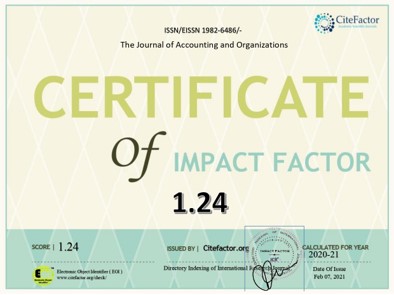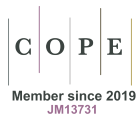A transparência da informação contábil como instrumento de formação de esferas públicas
DOI:
https://doi.org/10.11606/issn.1982-6486.rco.2022.195445Palavras-chave:
Esferas públicas, Transparência, Informação contábil, Gestão socialResumo
O objetivo desse ensaio teórico foi verificar como a transparência da informação contábil pode contribuir para a formação de esferas públicas que possam influenciar decisões políticas. A transparência está relacionada à linguagem contábil, tornando-a clara, compreensível e inteligível, de modo que possa ser utilizada cotidianamente pela sociedade. A linguagem contábil é capaz de socializar e integrar as pessoas nas organizações e na sociedade ao se articular a intersecção entre transparência, publicidade e accountability. O conceito de esferas públicas está fundamentado em Habermas, entendidas como um fenômeno social que, por meio do diálogo, do agir comunicativo e da compreensão, evidenciam e dramatizam os problemas da sociedade, sendo capaz de influenciar decisões políticas. A transparência da informação contábil pode promover o engajamento do indivíduo ao bem comum, integrando-o nos espaços de diálogo e estimulando, assim, a formação das esferas públicas capazes de pressionar o Estado nas decisões políticas. A transparência da informação contábil permite gerar um ciclo virtuoso de relação entre a sociedade e o Estado, intermediado pelas esferas públicas.
Downloads
Referências
Avritzer, L., & Costa, S. (2004). Teoria crítica, democracia e esfera pública: concepções e usos na América Latina. Revista de Ciências Sociais, 47(4), 703-728. https://doi.org/10.1590/S0011-52582004000400003
Bertot, J., Jaeger, P., & Grimes, J. (2010). Using ICTs to create a culture of transparency: e-government and social media as openness and anti-corruption tools for societies. Government Information Quarterly, 27, 264-271. https://doi.org/10.1016/j.giq.2010.03.001
Brundidge, J. (2010). Encountering ‘‘difference’’ in the contemporary public sphere: the contribution of the internet to the heterogeneity of political discussion networks. Journal of Communication, 60 (1), 680-700. https://doi.org/10.1111/j.1460-2466.2010.01509.x
Brown, J. (2009). Democracy, sustainability and dialogic accounting technologies: taking pluralism seriously. Critical Perspectives on Accounting, 20, 313-342. https://doi.org/10.1016/j.cpa.2008.08.002
Cançado, A., Tenório, F., & Pereira, J. (2019). Gestión social: epistemología de un paradigma. Ecuador: Universidad del Azuay.
Edwards, L. (2020). Transparency, publicity, democracy, and markets: inhabiting tensions through hybridity. American Behavioral Scientist, 64 (11), 1545-1564. https://doi.org/10.1177/0002764220945350
Garcia, A., Pereira, J., Alcântara, V., & Cruz, E. (2018). Aprofundamento das esferas públicas para a gestão social: caminhos para uma reconstrução empírico-descritiva e normativa. Cadernos EBAPE, 16 (2), 163-185. https://doi.org/10.1590/1679-395160265
Gallhofer, S., Haslam, J. (2016). Some reflections on the construct of emancipatory accounting: shifting meaning and the possibilities of a new pragmatism. Critical Perspectives on Accounting, 1-19. http://dx.doi.org/10.1016/j.cpa.2017.01.004
Habermas, J. (2003a). Mudança estrutural da esfera pública: investigações quanto a uma categoria da sociedade burguesa. Tradução: Flávio R. Kothe. Rio de Janeiro: Tempo Brasileiro.
Habermas, J. (2003b). Direito e democracia: entre facticidade e validade. Rio de Janeiro: Tempo Brasileiro.
Heald, D. (2012). Why is transparency about public expenditure so elusive? International Review of Administrative Sciences, 78(1), 30-49. https://doi.org/10.1177/0020852311429931
Hood, C. (2007). What happens when transparency meets blame-avoidance? Public Management Review, 9(2), 191-210. http://dx.doi.org/10.1080/14719030701340275
Irvine, H., & Moerman, L. (2017). Gambling with the public sphere: accounting’s contribution to debate on social issues. Critical Perspectives on Accounting, 48, 35-52. https://doi.org/10.1016/j.cpa.2017.05.002
Langella, C., Pessina, E., Redmayne, N., & Sicilia, M. (2021). Financial reporting transparency, citizens' understanding, and public participation: A survey experiment study. Public Administration, 1-20. https://doi.org/10.1111/padm.12804
Lourenço, R. (2016). Evidence of an open government data portal impact on the public sphere. International Journal of Electronic Government Research, 12 (3), 21-36. https://doi.org/10.4018/IJEGR.2016070102
Meneghetti, F. (2011). O que é um ensaio-teórico? Revista de Administração Contemporânea, 15 (2), 320-332. https://doi.org/10.1590/S1415-65552011000200010
Moore, S. (2017). Towards a sociology of institutional transparency: openness, deception and the problem of public trust. Sociology, 1, 1-15. https://doi.org/10.1177/0038038516686530
Perlatto, F. (2015). Seletividade da esfera pública e esferas públicas subalternas: disputas e possibilidades na modernização brasileira. Revista de Sociologia e Política, 23 (53), 121-145. https://doi.org/121-145. 10.1590/1678-987315235307
Piotrowski, S., & Rysin, G. (2007). Citizen attitudes toward transparency in local government. The American Review of Public Administration, 37 (3), 306-323. https://doi.org/10.1177/0275074006296777
Stewart, E., & Hartmann, D. (2020). The new structural transformation of the public sphere. Sociological Theory, 38 (2), 170-191. https://doi.org/10.1177/0735275120926205
Tilly, C. (1996). Coerção, capital e estados europeus. São Paulo: EDUSP.
Vianna, L. (1997). A revolução passiva: iberismo e americanismo no Brasil. Rio de Janeiro: Revan.
Villoria, M. (2021). ¿Qué condiciones favorecen una transparencia pública efectiva? A review article. Revista de Estudios Políticos, 194, 213-247. https://doi.org/10.18042/cepc/rep.194.08
Downloads
Publicado
Edição
Seção
Licença
Copyright (c) 2022 Érica Suélen do Nascimento, José Roberto Pereira

Este trabalho está licenciado sob uma licença Creative Commons Attribution-NonCommercial-NoDerivatives 4.0 International License.
A RCO adota a política de Acesso Livre (Libre Open Access), sob o acordo padrão Creative Commons (CC BY-NC-ND 4.0). O acordo prevê que:
- A submissão de texto autoriza sua publicação e implica compromisso de que o mesmo material não esteja sendo submetido a outro periódico. O original é considerado definitivo;
- Autores mantêm os direitos autorais e concedem à revista o direito de primeira publicação, com o trabalho simultaneamente licenciado sob a Licença Creative Commons Attributionque permite o compartilhamento do trabalho com reconhecimento da autoria e publicação inicial nesta revista;
- Autores têm autorização para assumir contratos adicionais separadamente, para distribuição não-exclusiva da versão do trabalho publicada nesta revista (ex.: publicar em repositório institucional ou como capítulo de livro), com necessário reconhecimento de autoria e publicação inicial nesta revista;
- Autores têm permissão e são estimulados a publicar e distribuir seu trabalho online (ex.: em repositórios institucionais ou na sua página pessoal) antes ou durante o processo editorial, já que isso pode gerar alterações produtivas, bem como aumentar o impacto e a citação do trabalho publicado (Veja O Efeito do Acesso Livre);
- A revista não paga direitos autorais aos autores dos textos publicados;
- O detentor dos direitos autorais da revista, exceto os já acordados no acordo de Libre Open Access (CC BY-NC-ND 4.0), é o Departamento de Contabilidade da Faculdade de Economia, Administração e Contabilidade de Ribeirão Preto da Universidade de São Paulo.
Não são cobradas taxas de submissão ou de publicação.
São aceitos até 4 autores por artigo. Casos excepcionais devidamente justificados poderão ser analisados pelo Comitê Executivo da RCO. São considerados casos excepcionais: projetos multi-institucionais; manuscritos resultantes da colaboração de grupos de pesquisa; ou que envolvam grandes equipes para coleta de evidências, construção de dados primários e experimentos comparados.
É recomendada a ordem de autoria por contribuição, de cada um dos indivíduos listados como autores, especialmente no desenho e planejamento do projeto de pesquisa, na obtenção ou análise e interpretação de dados e redação. Os autores devem declarar as efetivas contribuições de cada autor, preenchendo a carta ao editor, logo no início da submissão, responsabilizando-se pelas informações dadas.
É permitida a troca de autores durante todo o processo de avaliação e, antes da publicação do manuscrito. Os autores devem indicar a composição e ordem final de autoria no documento assinado por todos os envolvidos no aceite para publicação. Caso a composição e ordem de autoria seja diferente da informada anteriormente no sistema, todos autores anteriormente listados deverão se manifestar favoráveis.
No caso de identificação de autoria sem mérito ou contribuição (ghost, guest or gift authorship), a RCO segue o procedimento recomendado pela COPE.







